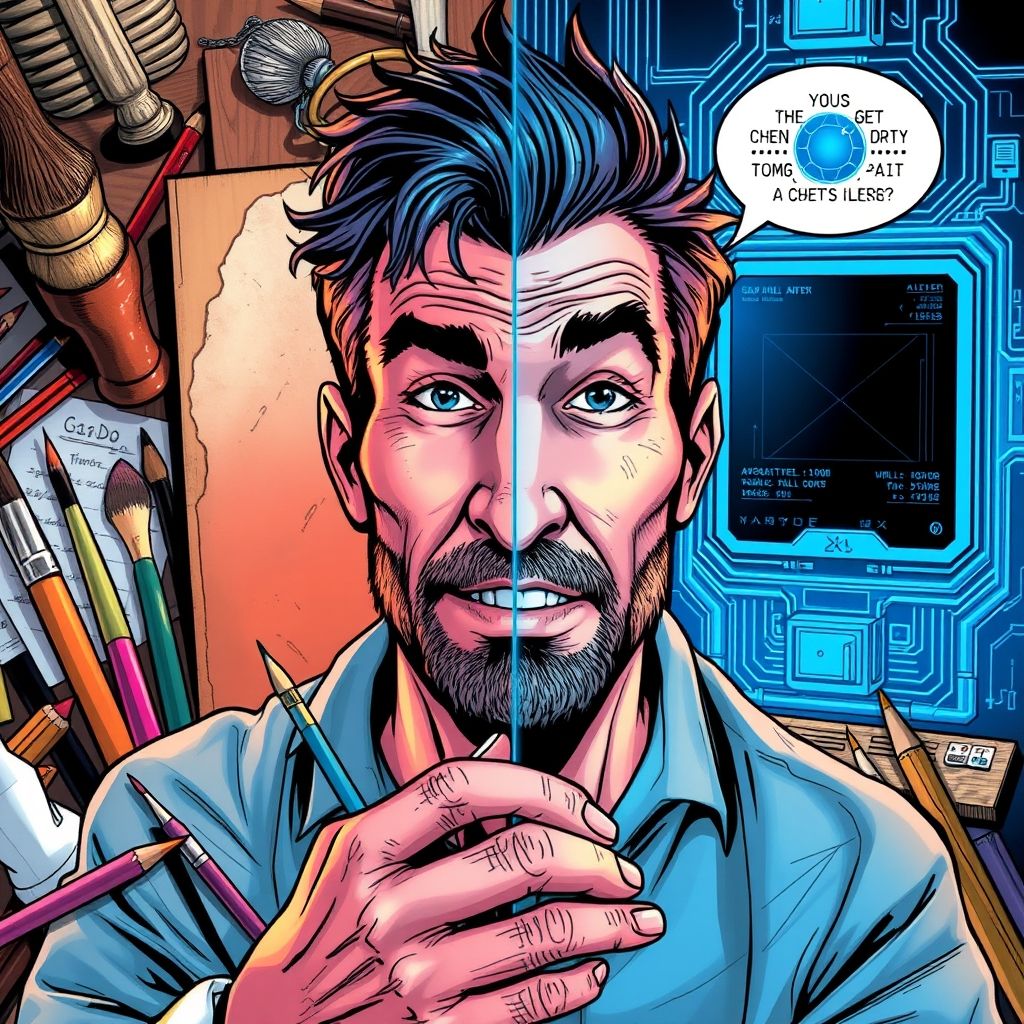Stanley ‘Artgerm’ Lau, a name synonymous with comic book art, isn’t mincing words. The AI art revolution? He’s not buying it. In fact, he’s selling a stark warning: we’re headed for an artistic dark age, devoid of ‘real’ creators, if we don’t pump the brakes on our AI obsession.
Artgerm, whose portfolio boasts Marvel, DC, Capcom, and Square Enix, isn’t some Luddite railing against progress. He simply believes AI-generated images aren’t art. Period. “I don’t agree that AI images are art,” he declares, with the force of a thousand convention sketches. “I don’t consider them art because art is exclusively a human endeavour.” Harsh, but hey, he’s an artist, not a diplomat. He argues that art is intrinsically linked to human experience, a distillation of life filtered through a unique visual lens. Algorithms, however sophisticated, can’t replicate that. They can mimic, iterate, and regurgitate, but they can’t feel.
He acknowledges AI’s utility. Streamlining animation workflows? Fine. Slashing game development time? Understandable. But mistaking these efficiencies for genuine artistic expression? That’s where Artgerm draws the line, harder than a freshly sharpened pencil. He concedes that AI can “ease development” and make the life of animators easy, but warns that the final product still needs the human touch.
Artgerm hits on something crucial: the inherent value in human-made art. It’s not just about the pixels (or paint strokes). It’s about the artist’s journey, their struggles, their triumphs – their life. “When people buy my work, they don’t just buy the image. They buy my legacy, my experience in life. They’re purchasing a piece of my life – that’s what gives it value,” he explains. Try getting that from a Midjourney prompt.
He envisions a future where AI floods the market with soulless images, devaluing the craft and squeezing out aspiring artists. Think mass-produced goods versus handcrafted items. “In the past, many products were handmade – shoes, clothing, bags. Then machines took over. Now, if you want something handmade, you have to pay a premium. I believe the same will happen with art. AI-generated images will flood the market, but people will eventually return to valuing human-made art”. Will we see a “renaissance of human-created art”? Artgerm hopes so.
The immediate impact? Visualizers are feeling the pinch. Concept sketches, once a reliable gig, are now being churned out by AI, shrinking job opportunities. Artgerm doesn’t dismiss AI as a tool entirely. He suggests artists need to learn how to use AI tools but cautions against artists losing control, and warns against over-reliance. “Either the visualiser loses their job, or they have to adapt by learning AI tools. That’s fair, but artists must ask themselves, ‘are you driving the technology, or is the technology driving you?’” It’s a question worth pondering. Are we masters of the machine, or are we becoming its servants?
This fear is already rippling through art education. “I run a school, and I’ve seen a dip in enrolment because parents worry whether art is still a viable career,” Artgerm admits. The allure of a ‘stable’ job in tech versus the perceived precarity of art is a tough sell, especially when AI is touted as the future.
His advice to aspiring artists? Keep creating. Embrace the struggle. Because the joy of art isn’t just in the final product; it’s in the process. “The most interesting part of art is the process – solving problems, creating something from nothing – so why would you outsource the most fun part of the creative journey to a machine?” The joy is in “suffer[ing] in joy”.
For Artgerm, the choice is clear: preserve human creativity or succumb to AI convenience. “If I ever incorporate AI into my work, I’ll forever be branded as an AI artist – there’s no way out,” he states. He’d rather be a real artist, thank you very much.
And while AI might generate images, it can’t replicate the human connection at conventions, like MCM Comic Con. “At conventions, fans come up to me and talk about my work, discuss the creative choices I made. AI can’t replicate that experience. You’re not going to a convention to meet a computer,” he laughs. Maybe the future of art isn’t about algorithms, but about human interaction, something AI simply can’t compute.
So, take heart, aspiring artists. The path may be challenging, but the rewards – the human connection, the creative fulfillment, the legacy – are worth fighting for. As Artgerm concludes, “In the future, there will be fewer artists like me – real artists. That will make us rarer, more valuable. And that’s worth pursuing.”



Leave a Reply